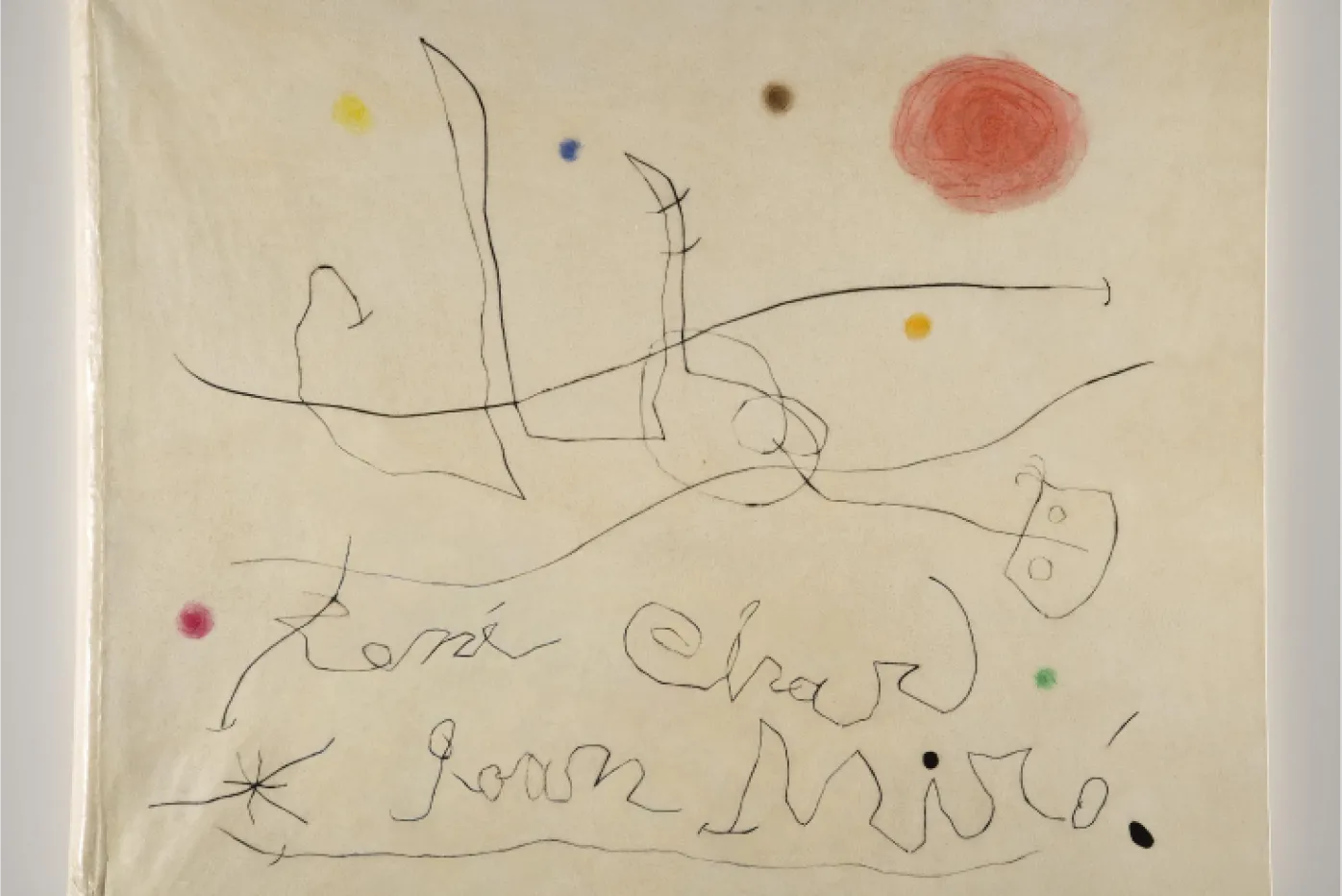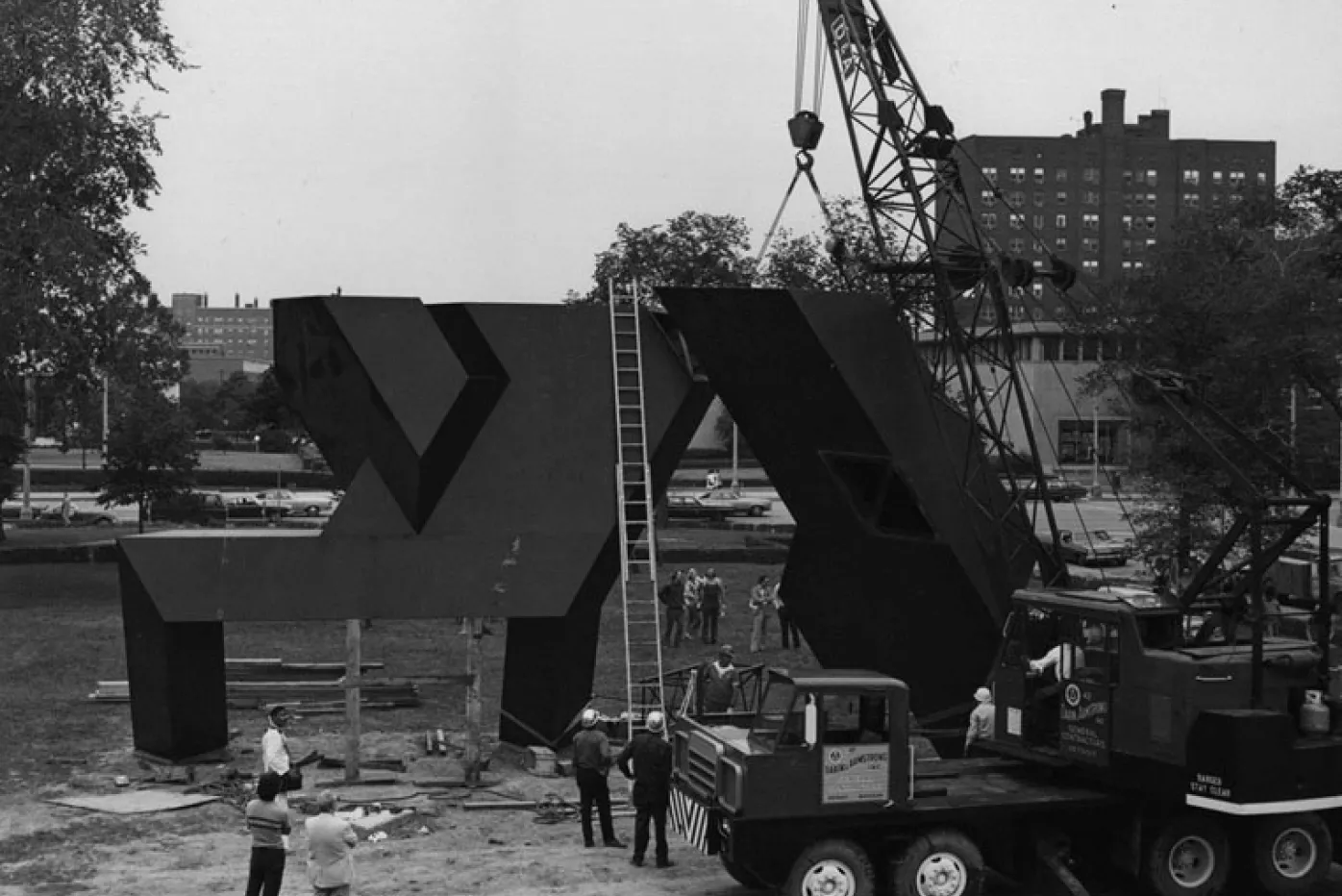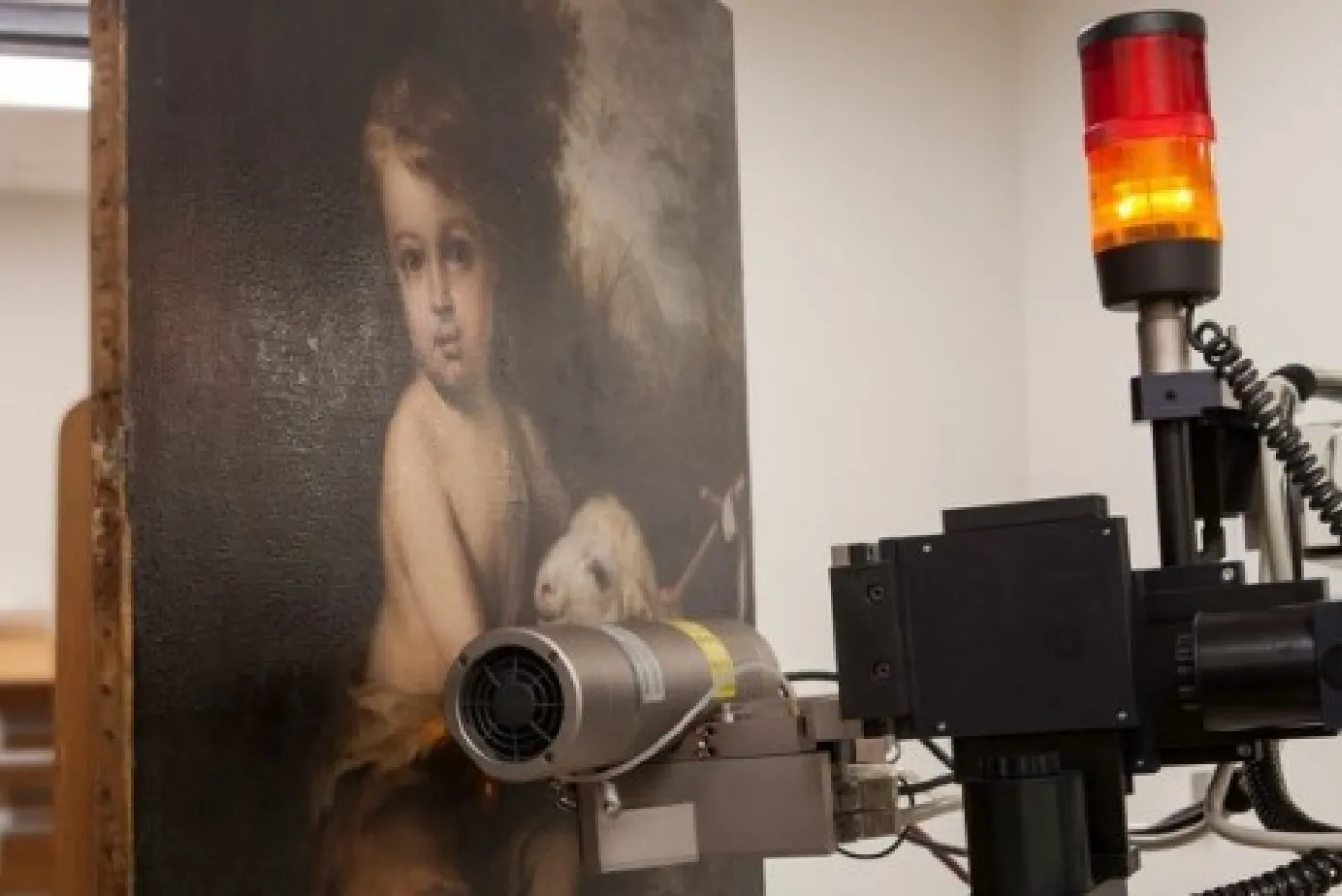Joan Miró's Portfolio Cover for "The Magnet's Flow"
Updated Jul 20, 2022
This portfolio cover by the Spanish artist Joan Miro, dated 1964, was designed to hold an edition of sixteen prints. Its construction is similar to a book cover: parchment (a type of leather) stretched over heavy cardboard panels. The colors of the design are printed in a technique similar to etching, known as drypoint.
The portfolio cover had numerous condition problems when it arrived at the DIA. The surface was very grimy, and because it had been in a damp environment in the past, it had black-violet mold stains (at lower center), orange rust stains (below center), and it was warped out of plane, with draws radiating from the left corners.
The goals of the conservation treatment were to diminish the surface grime and the embedded stains, and to flatten the planar distortions caused by warping. Removing the grime was accomplished using different types of erasers, followed by rolling the surface with damp, and then dry cotton swabs. Flattening the distortions was accomplished by placing the cover in a humidity chamber for a period of time, and then drying it between thick paper blotters under heavy weights. Because the mold stains and rust stains could not be removed entirely, they were masked by painting over just the stained areas with opaque watercolors.

Miro cover after restoration efforts
This portfolio cover by the Spanish artist Joan Miro, dated 1964, was designed to hold an edition of sixteen prints. Its construction is similar to a book cover: parchment (a type of leather) stretched over heavy cardboard panels. The colors of the design are printed in a technique similar to etching, known as drypoint.
The portfolio cover had numerous condition problems when it arrived at the DIA. The surface was very grimy, and because it had been in a damp environment in the past, it had black-violet mold stains (at lower center), orange rust stains (below center), and it was warped out of plane, with draws radiating from the left corners.
The goals of the conservation treatment were to diminish the surface grime and the embedded stains, and to flatten the planar distortions caused by warping. Removing the grime was accomplished using different types of erasers, followed by rolling the surface with damp, and then dry cotton swabs. Flattening the distortions was accomplished by placing the cover in a humidity chamber for a period of time, and then drying it between thick paper blotters under heavy weights. Because the mold stains and rust stains could not be removed entirely, they were masked by painting over just the stained areas with opaque watercolors.


